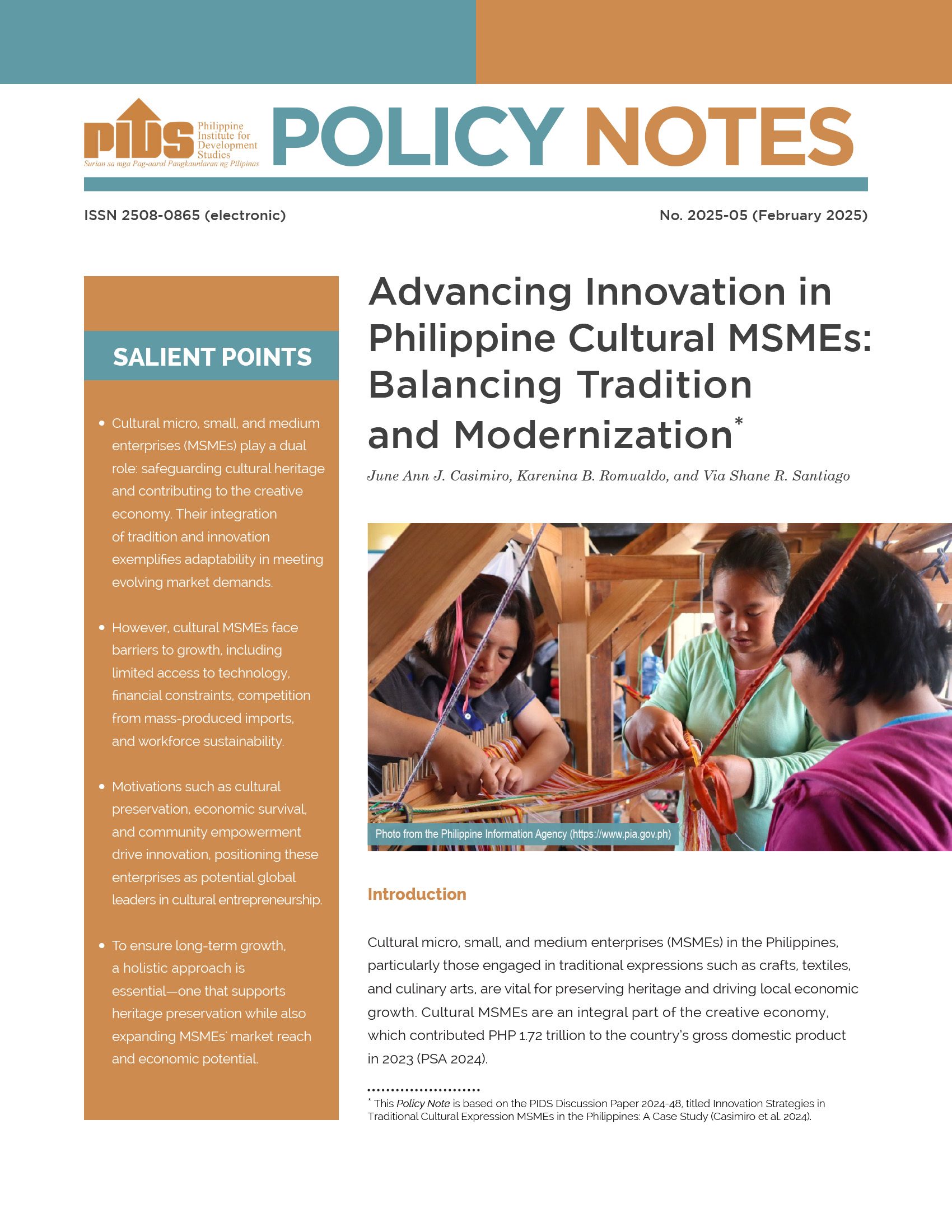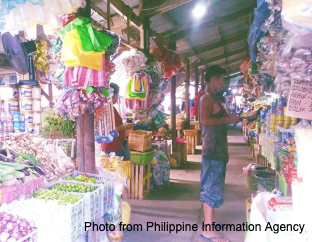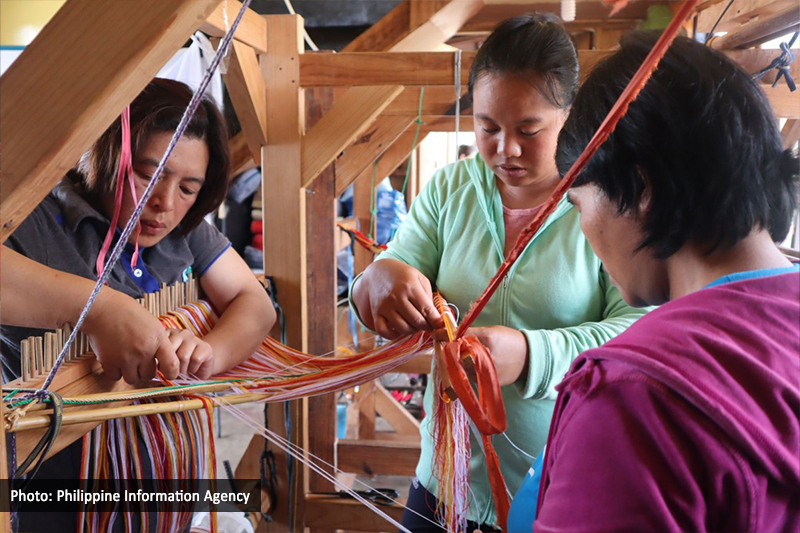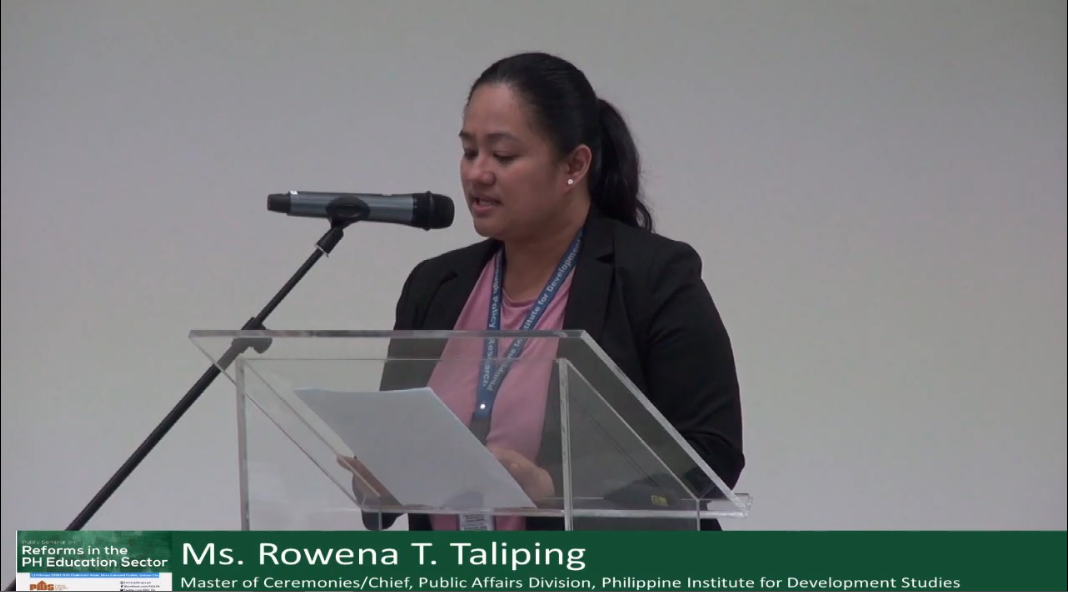The lack of strong competition in the Philippines is discouraging the growth of new businesses and small and medium enterprises (SMEs) in the country. The more than 20 years of trade liberalization in the manufacturing sector has not resulted in any significant increase in competition, preventing the economy from reaping more of the benefits of trade liberalization. This is the gist of a paper prepared by Rafaelita Aldaba, Research Associate at the Philippine Institute for Development Studies (PIDS).
In her recent presentation at PIDS, Aldaba explained that competition is one of the major channels through which trade liberalization affects the economy. Competition is important in fostering innovation and technology adoption which leads to increases in competitiveness, productivity, and growth that could have large consequences for poverty and inequality reduction in the Philippines.
A culture of competition is characterized by the efficient allocation of resources and production processes, competition among firms in both price and quality, innovation of new products, and consumers being able to benefit from the resulting efficiency. However, evidence shows that most of these characteristics are absent indicating that competition in the country has remained weak.
Since the early 1980s, the Philippines has implemented market-oriented reforms that were intended to stimulate competition, induce firm efficiency, and introduce technological change through new investment. The last twenty years of trade liberalization considerably reduced high rates of effective protection in the country. Nevertheless, the protection structure continues to be uneven, with some sectors receiving relatively higher levels of protection than others. Petrochemicals, float glass, and steel are prominent examples of raw materials receiving higher duties than their finished products.
Our trade liberalization process has been reversed many times in the past due to the intense lobbying by strong interest groups for higher protection; hence, a policy of selective protection emerged causing tremendous distortions in our trade and economic structure. Tariffs have been changed on an ad hoc basis without taking efficiency considerations into account, Aldaba noted. The protection that emerges, however, becomes incompatible with the countrys stated development objectives and continues to provide incentives for more lobbying activities, she added.
Continuous distortions in tariff in the country have given way to favoring highly protected sectors like agriculture and manufacturing importables as against exportable goods, thereby leading to a worsening of competitiveness. The high cost of sugar, for instance, is brought about by a 65% tariff that continues to affect the competitiveness of the countrys fruit processing sector.
Other indicators like average labor productivity have also remained low in the 1980s and have even declined in the 1990s. Total factor productivity, a measure of the efficiency with which inputs of capital and labor are used, has also been generally low indicating that firms have not adopted technological changes.
Aldaba said, our experience shows that trade liberalization, while necessary, is not a sufficient condition to promote competition, it is also important that firms change their behavior and adjust to the new market environment.
The strength of competition is a function not only of the behavior of firms but also of the external environment within which firms compete. This includes both physical and institutional infrastructures like the state of transport and communications, framework of laws and regulations, effectiveness of the financial system in matching investment resources with entrepreneurial opportunities, as well as information available to consumers. When this competitive infrastructure is inadequate, competition becomes weak.
Business firms will not venture into the unknown and uncertain unless the government program for implementing policy reforms is credible; policy reversals, delays in timetable, lack of infrastructure and inconsistent decision-making can undermine the success of entrepreneurship that could be had from the governments liberalization policy, Aldaba concluded.
In her recent presentation at PIDS, Aldaba explained that competition is one of the major channels through which trade liberalization affects the economy. Competition is important in fostering innovation and technology adoption which leads to increases in competitiveness, productivity, and growth that could have large consequences for poverty and inequality reduction in the Philippines.
A culture of competition is characterized by the efficient allocation of resources and production processes, competition among firms in both price and quality, innovation of new products, and consumers being able to benefit from the resulting efficiency. However, evidence shows that most of these characteristics are absent indicating that competition in the country has remained weak.
Since the early 1980s, the Philippines has implemented market-oriented reforms that were intended to stimulate competition, induce firm efficiency, and introduce technological change through new investment. The last twenty years of trade liberalization considerably reduced high rates of effective protection in the country. Nevertheless, the protection structure continues to be uneven, with some sectors receiving relatively higher levels of protection than others. Petrochemicals, float glass, and steel are prominent examples of raw materials receiving higher duties than their finished products.
Our trade liberalization process has been reversed many times in the past due to the intense lobbying by strong interest groups for higher protection; hence, a policy of selective protection emerged causing tremendous distortions in our trade and economic structure. Tariffs have been changed on an ad hoc basis without taking efficiency considerations into account, Aldaba noted. The protection that emerges, however, becomes incompatible with the countrys stated development objectives and continues to provide incentives for more lobbying activities, she added.
Continuous distortions in tariff in the country have given way to favoring highly protected sectors like agriculture and manufacturing importables as against exportable goods, thereby leading to a worsening of competitiveness. The high cost of sugar, for instance, is brought about by a 65% tariff that continues to affect the competitiveness of the countrys fruit processing sector.
Other indicators like average labor productivity have also remained low in the 1980s and have even declined in the 1990s. Total factor productivity, a measure of the efficiency with which inputs of capital and labor are used, has also been generally low indicating that firms have not adopted technological changes.
Aldaba said, our experience shows that trade liberalization, while necessary, is not a sufficient condition to promote competition, it is also important that firms change their behavior and adjust to the new market environment.
The strength of competition is a function not only of the behavior of firms but also of the external environment within which firms compete. This includes both physical and institutional infrastructures like the state of transport and communications, framework of laws and regulations, effectiveness of the financial system in matching investment resources with entrepreneurial opportunities, as well as information available to consumers. When this competitive infrastructure is inadequate, competition becomes weak.
Business firms will not venture into the unknown and uncertain unless the government program for implementing policy reforms is credible; policy reversals, delays in timetable, lack of infrastructure and inconsistent decision-making can undermine the success of entrepreneurship that could be had from the governments liberalization policy, Aldaba concluded.










